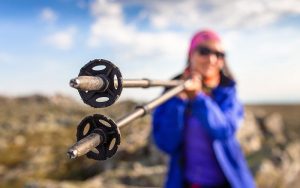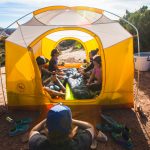Hiking boots are one of the most important hiking gear pieces that you need to invest in. Hiking can be a tough activity and hiking boots will help ensure that your hiking experience goes smoothly, without any discomfort. If you’re not sure how to choose the right hiking boot, we’ve got you covered with this guide! First, let’s explore what makes hiking boots different from other types of shoes.
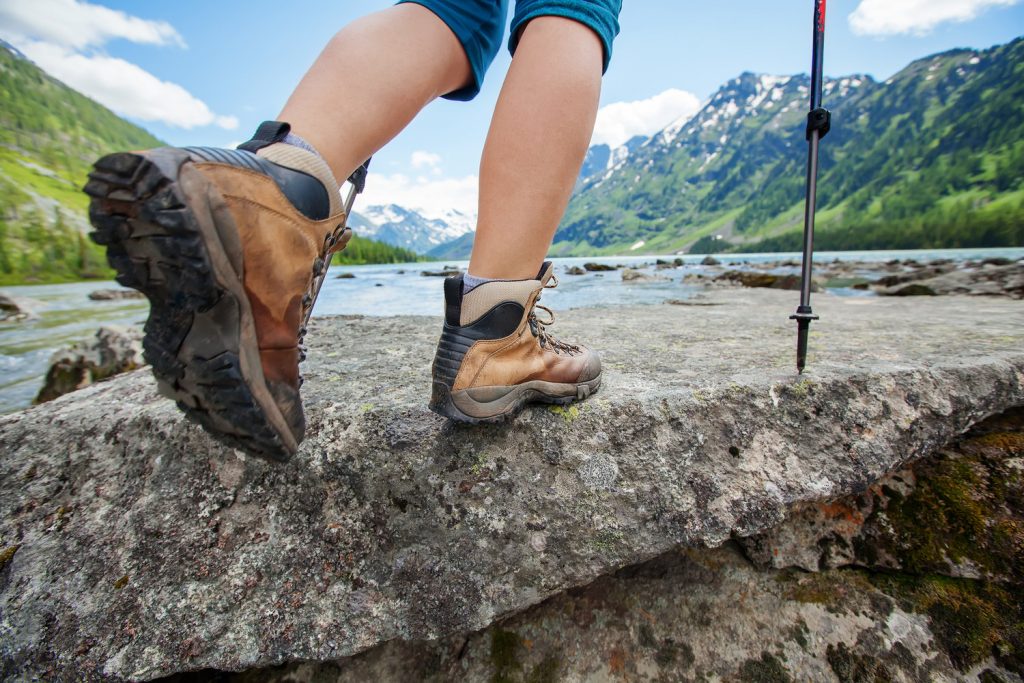
Table of Contents
What Are Hiking Boots?
Hiking boots are a very specific type of shoe designed for hiking or walking long distances. Hiking boots have thick soles made out of rubber, with deep lugs in the sole to provide traction on rough surfaces like rocks and dirt. The upper part is made from waterproof materials including leather or nylon mesh (for breathability). They also often have a gusseted tongue to keep water and debris from getting inside the boot.
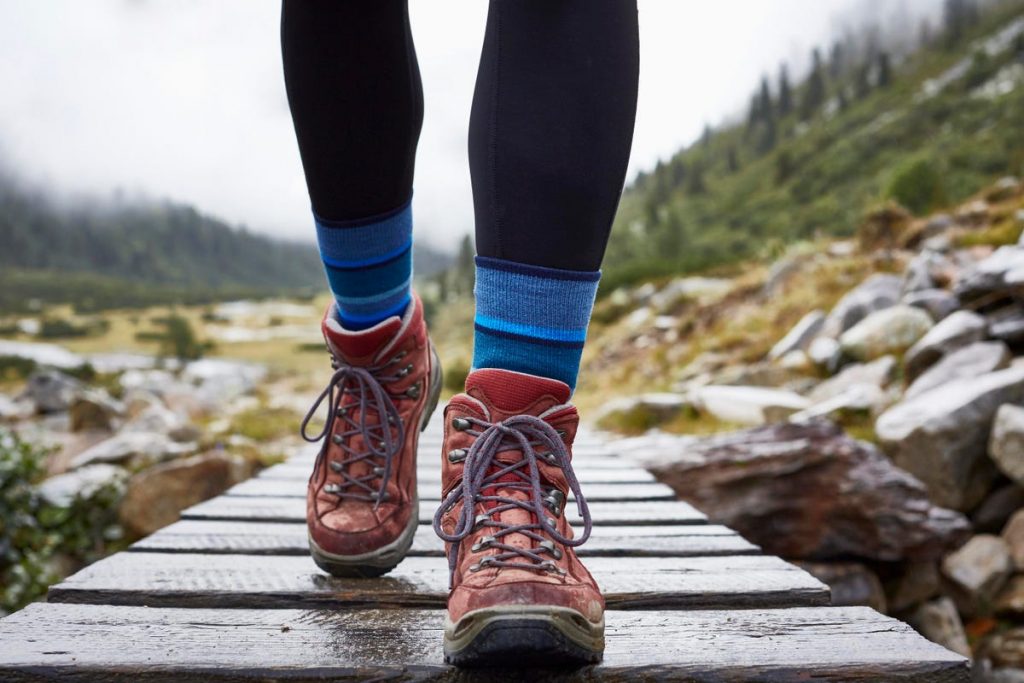
What Makes Hiking Boots Different?
Hiking boots are very different from regular casual shoes in both design and materials used. The rubber soles of hiking boots give you more traction on rough surfaces while keeping your feet cool by allowing their natural breathability. The extra-thick soles provide great cushioning and support, particularly around the ankles, which is important when your feet are going to be carrying you over rough terrain for many hours at a time.
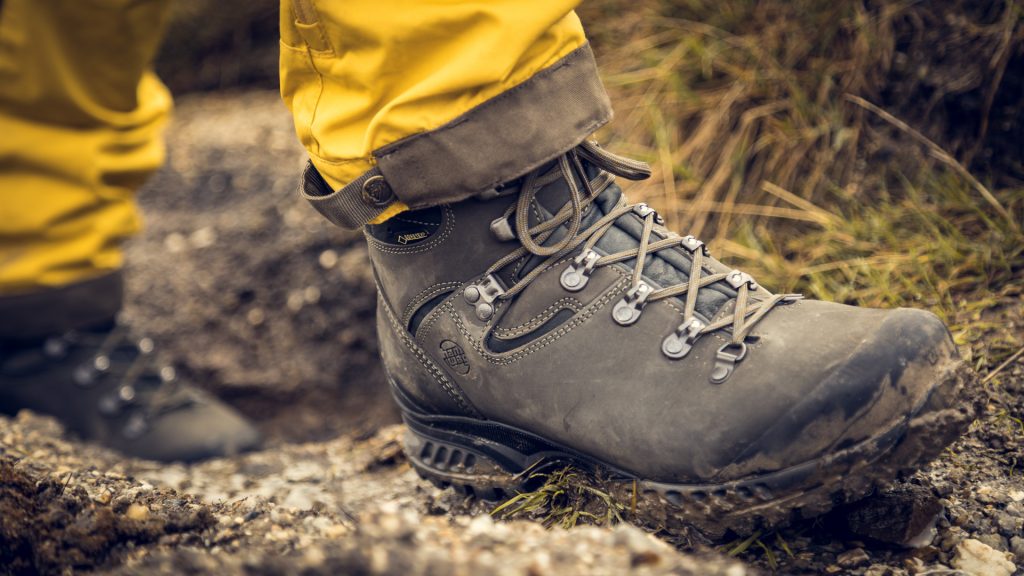
What to Consider Before Choosing Your Hiking Boots
In order to choose the right hiking boots for you, there are a few key features that you need to consider.
- Consider your activity: Hiking boots are designed for hiking, which is a high-intensity activity. For this reason, they’re built to provide support and stability for your ankles and feet as you walk over uneven terrain. For casual hiking, a mid-height boot is appropriate, but if you’re going to be doing more intense hiking, you’ll want a boot with ankle support.
- Consider the terrain: Hiking boots are designed to provide traction on uneven surfaces, so it’s important to consider what kind of hiking you’ll be doing. If you’re going up a mountain with very rocky terrain, you’ll want a boot with deep lugs in the sole for good traction. If you’re going on an easy hike, or if your hikes are more of the forest variety, you’ll be just fine with a boot that doesn’t have as much traction.
- Consider your hiking style: If you’re the type of hiker who likes to walk very quickly, you’ll probably want a boot with more ankle support. If you’re hiking for long hours, you’ll want a boot with more cushioning.
- Consider your budget: Hiking boots can be expensive; however, they’re an important piece of equipment and they’ll last you a long time. If your budget allows, we recommend investing in the best hiking boot that you can afford.
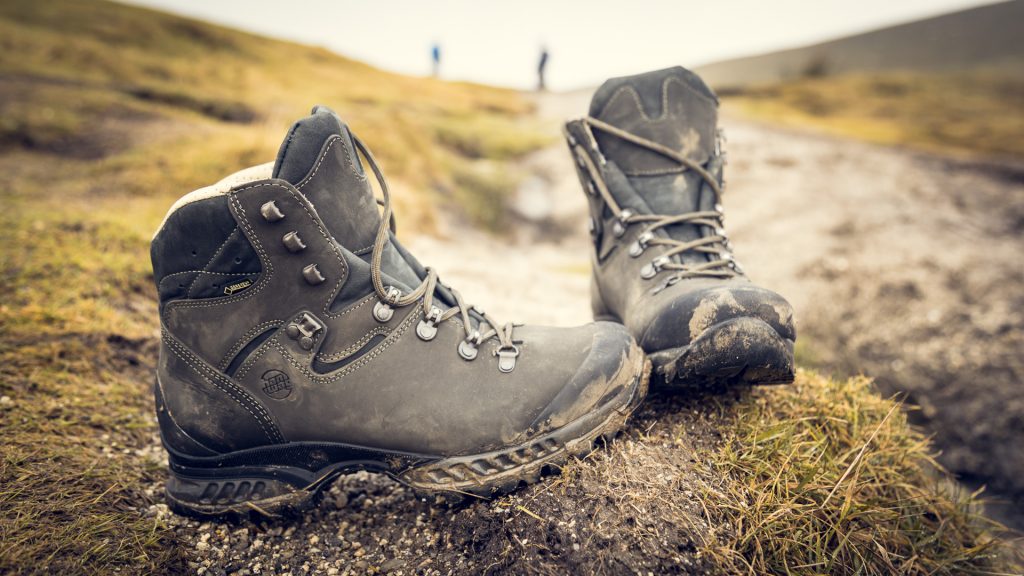
What to Look For When Buying Hiking Shoes
- Comfort: Hiking boots are built to be very comfortable, but they’re also designed to fit snugly and securely. When you try on a pair of hiking boots, make sure that the upper part of the boot is comfortable and doesn’t rub on your ankles. The toes should fit snugly in the front of the boot, but not press against them.
- Waterproofing: The upper part of hiking boots is typically made from a waterproof material like nylon or leather. Some hiking boots have a Gore-Tex waterproof liner, which is an expensive but effective way to ensure that your feet stay dry during the hike.
- Insulation: Hiking boots are usually insulated to keep your feet warm during cooler weather. Some hiking boots also come with removable liners, which you can switch out for warmer weather.
- Lacing System: The lacing system of hiking boots is very important; it’s what keeps your foot snug and secure in the boot. Make sure that it’s securely attached and doesn’t come undone when you walk, but also not so tight as to be uncomfortable.
- Cushioning: Hiking boots have a lot of cushioning around the ankles and in the sole to provide comfort during long periods of time on your feet. Some hiking boots are designed to be more flexible in the sole, while others are very stiff. If you’re going on a long hike with rough terrain, it’s best to choose a boot with more cushioning.
- Tread: It’s a good idea to choose boots with deep tread because it provides excellent grip on wet rocks and ice, but they’re not as comfortable and they wear out quickly.
- Weight: Hiking boots are typically heavier than casual walking shoes. If you’re going on an intense hike, it’s important to find a boot that is both comfortable and has good traction, but if you’re only going to walk casually in the forest or at a park, you can choose a lighter boot.
- Fit: The best option is to find a store with knowledgeable staff who can help you choose the best boot for your foot type.
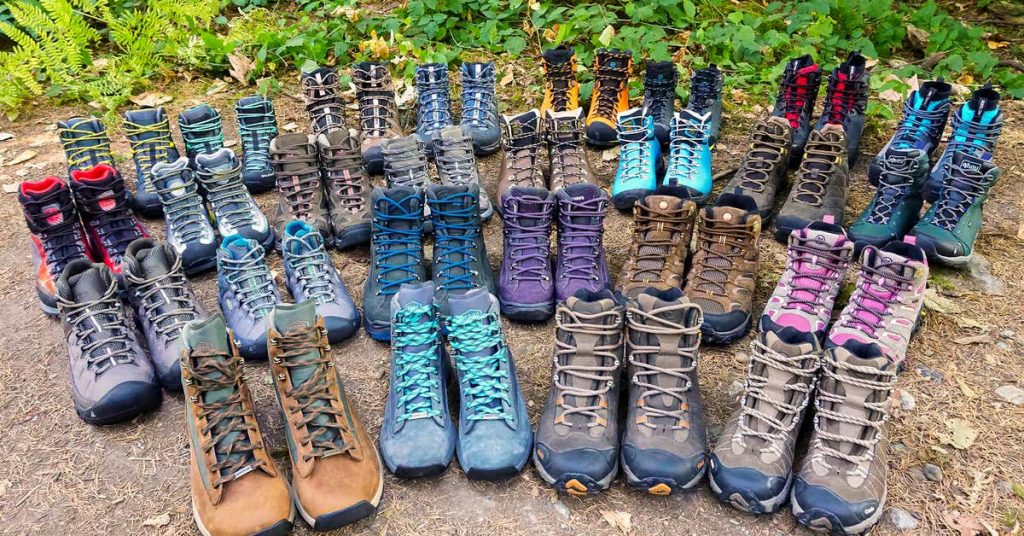
Types of Hiking Boots
There are different types of hiking boots available, each with its own pros and cons. Let’s take a look at the main three categories.
- Lightweight Hiking Boots: Lightweight boots are designed to provide support without sacrificing too much weight. These boots are perfect for long hikes, backpacking trips, and other activities where you’ll be carrying your own gear on your back. If you’re looking to buy lightweight hiking boots, it’s important that they cover the ankle to provide extra support during rough terrain crossings because of their reduced thickness.
- Day Hiking Boots: They’re ideal for casual hikers who plan on doing some light walking in their free time, but don’t want to invest a lot of money into high-end equipment. Day hiking boots are available in either waterproof or non-waterproof models and have rubber soles that provide traction when you walk over rocks.
- Hiking Boots: Hiking boots are the most common type of hiking shoes and they’re designed for long hikes over rough terrains. Hiking boots have a thick sole made from rubber to provide the best traction and durability over time.
- Backpacking Boots: These boots are designed for backpacking trips and long hikes where you’ll be carrying your own gear. These boots usually have a thick sole made of rubber or other durable materials to provide the best traction and durability. If you’re looking for backpacking boots, the key is to choose a model with ankle support and good traction.
- Trail running shoes: These boots are lightweight and flexible. The traction on their soles is not as good as other types of hiking boots though, which means they’re not the best option for wet conditions.
- Camping Boots: These boots are designed for camping trips where you’ll be spending most of your time inside a tent, rather than hiking. They’re similar to backpacking boots with a thick sole, but they won’t have as many of the features that make hiking boots suitable for long hikes.
- Mountaineering boots: These boots are designed for mountaineering trips where you’ll be climbing steep slopes and getting close to glaciers. Because of their design, mountaineering boots provide excellent ankle support and they’re usually waterproof. If you plan on doing some mountaineering, it’s important to invest in a good pair of mountaineering boots and to learn how to use them properly.
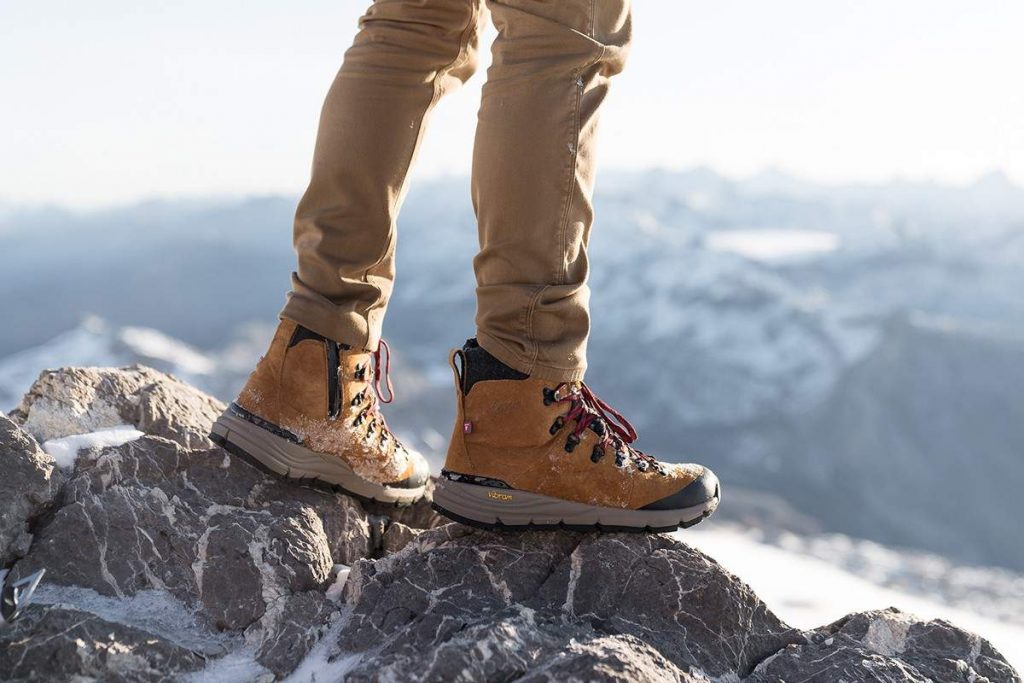
Types of Hiking Boots Material
There are different types of hiking boots available, each with its own pros and cons. Let, let’s talk about the most common materials used to make them:
- Leather: Leather provides great support and durability, but the downside is that it’s not very breathable. Leather boots can take a long time to dry out after getting wet and they’re significantly heavier than other materials.
- Nylon: Nylon is a lightweight material that provides great breathability and it dries out quickly, making them perfect for wet conditions. The downside of nylon is that they’re not as supportive or durable as other materials, which means you’ll have to replace them more often.
- Synthetic: Synthetic materials provide good support and they’re more breathable than leather or nylon, but if you plan on hiking in wet conditions for an extended period of time, you should consider getting a boot made from either leather or nylon.
- Gore-tex: Gore-tex is a waterproof material that allows your feet to breathe while keeping water out. It’s an excellent option for hiking in cold conditions where you’ll be spending a lot of time in snow or rain.
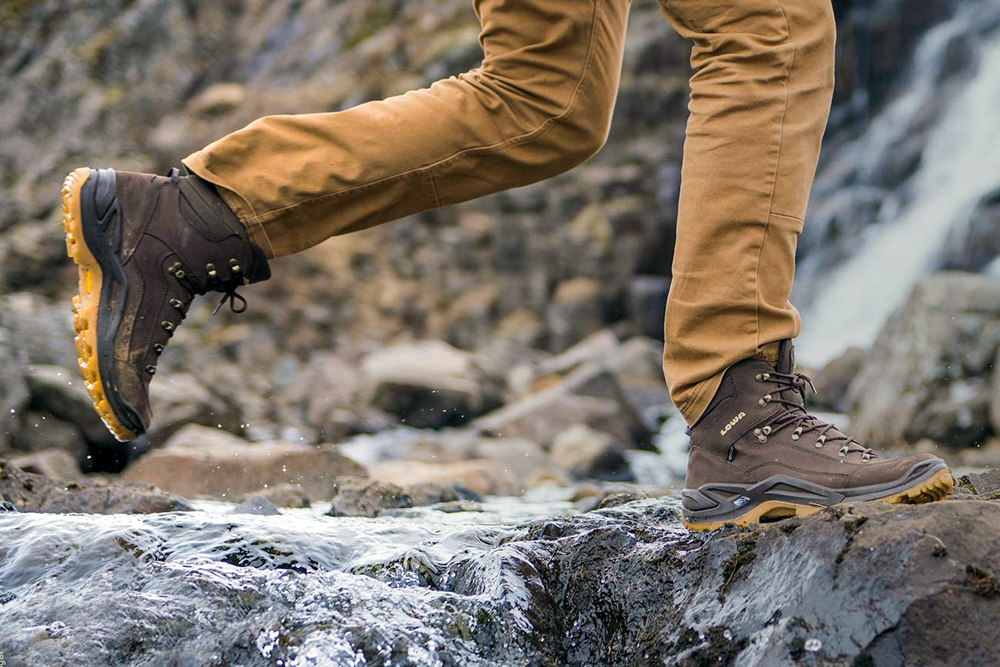
Types of Hiking Boot Insoles
Just like there are different types of hiking boots, there are also different types of insoles you can choose from:
- EVA Foam: It’s a foam material that provides good shock absorption, but it’s not very durable.
- Polyurethane: It provides great shock absorption and durability, which makes it the best option for long hikes.
- Memory foam: It’s an excellent choice if you have sensitive feet because it molds to your foot, making them more comfortable.
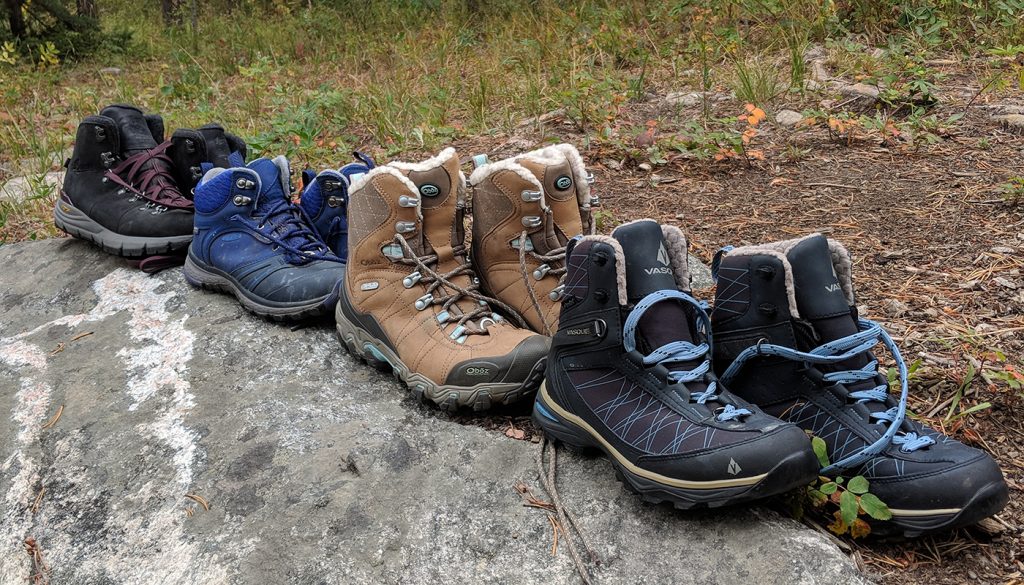
Hiking Boot Lacing Systems
The three main types of lacing systems are traditional, speed lace, and BOA.
- Traditional laces provide good support but they’re not very practical because you need to tie them every time you put your boots on or take them off, which takes a lot of time. They also come undone easily, which is dangerous if you’re hiking in the mountains.
- Speed lace systems are easier to put on and take off because all you need to do is pull them and they provide good support.
- Boa systems are the best option if you want boots that don’t need tying because all you need to do is turn a knob and they’ll tighten around your foot. They provide excellent support, but if the laces get damaged, you won’t be able to replace them.
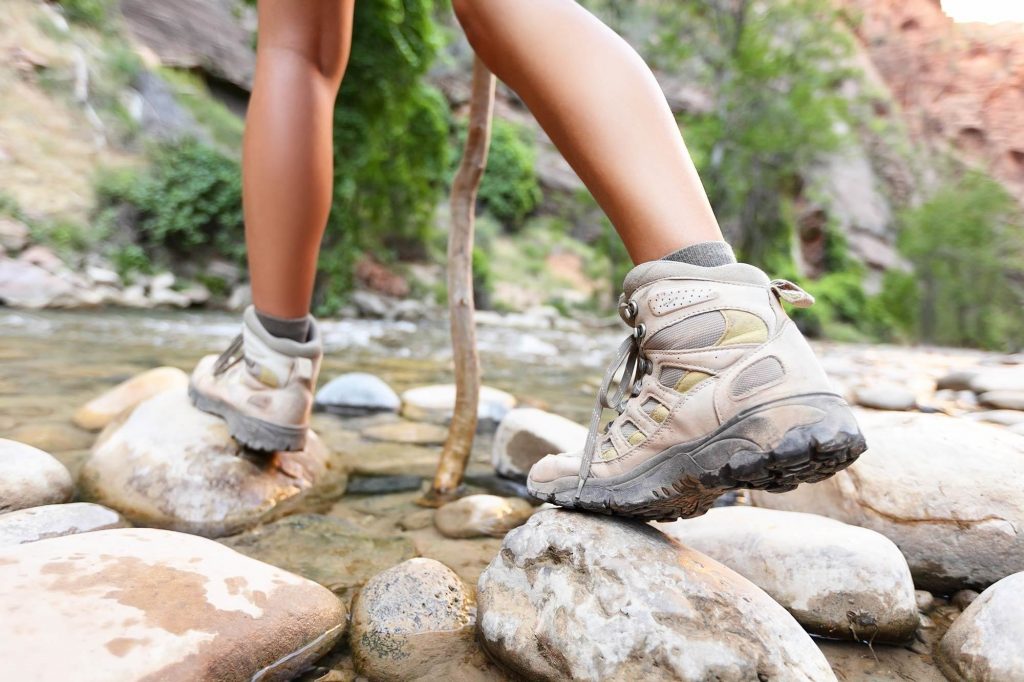
Hiking Boot Tread Patterns
Hiking boot tread patterns are designed to provide a good grip on different types of terrain, but they vary depending on the type of hiking you’ll be doing.
- Siped: They provide a good grip on wet rocks and ice.
- Shallow: They’re great for dirt trails, but they don’t perform very well in mud or snow.
- Deep: These are the best option if you plan on hiking through deep snow because they’ll provide excellent traction and prevent you from slipping.
- Composite: They’re the best option for hiking through all types of terrain because they provide good traction and balance.
- Stealth: They offer excellent grip on wet rocks and ice, but they’re not recommended for hiking through the snow because the shallow tread pattern won’t provide enough traction.
- Lugs: They provide a good grip on dirt trails, but they don’t perform very well in mud or snow.
- Aggressive: These offer maximum traction and they’re great for hiking through mud or snow, but the downside is that they don’t perform very well on steep inclines.
- Regular: They provide a good grip on most types of terrain, which makes them a good all-around option.
- Smooth: They’re not as grippy as lugs and they’re not recommended for hiking in wet conditions because they slip easily.
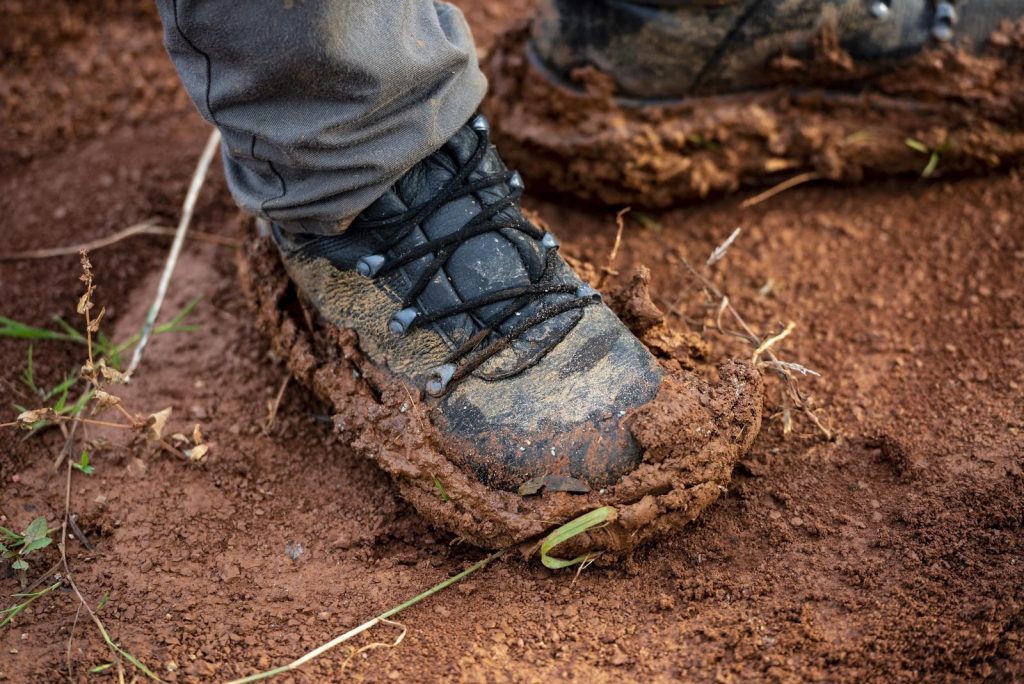
Hiking Shoe Features
There are different hiking shoe features that will make your hike much more comfortable.
- Cushioning: It’s a great option for people who suffer from knee pain because it reduces the amount of impact you’ll get while hiking.
- Tongue: A larger tongue provides good protection against rocks and sticks, but if it’s too large, you won’t be able to tie your shoes.
- Foam: It’s a material that provides good cushioning and it’s also very durable.
- Mesh: It allows your feet to breathe, which is great for hiking in hot conditions.
- Waterproof: It’s an excellent option if you plan on hiking through wet conditions because it’ll keep your feet dry.
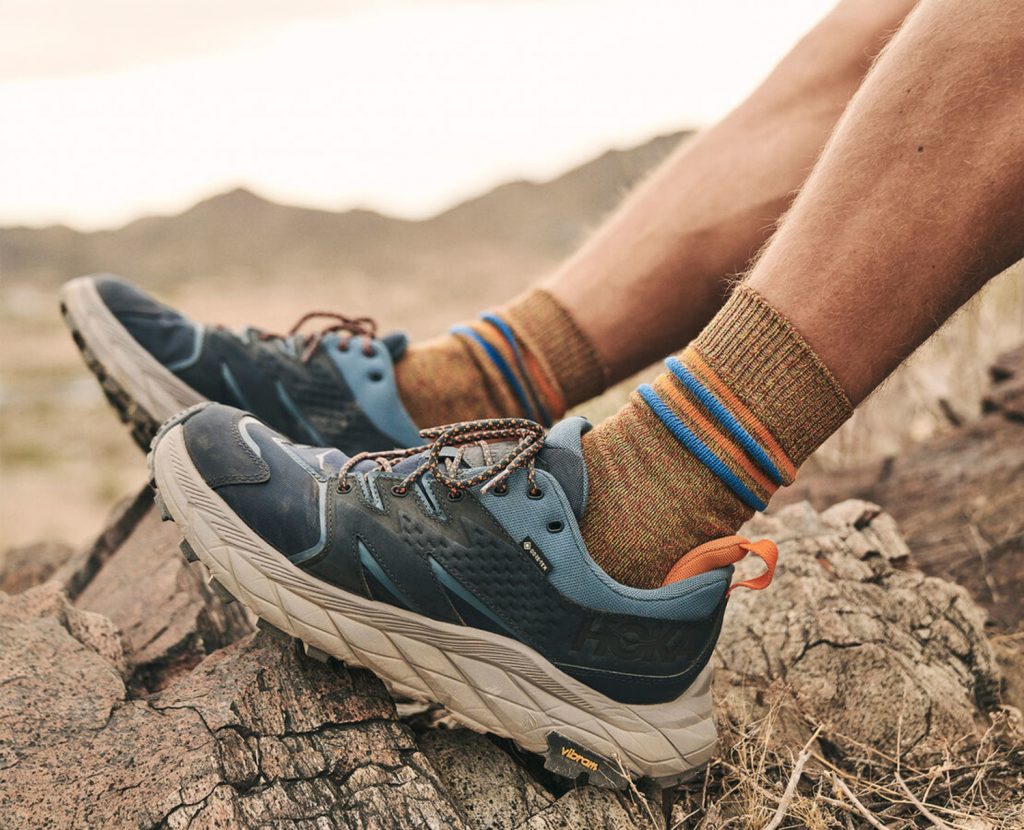
- Insulated: It’s a good option for winter hiking because it’ll keep your feet warm.
- Special features: There are many special features that you can choose from, depending on the type of terrain and weather conditions:
- Snow Gaiter: It prevents snow and water from entering your shoes.
- Waterproof Gaiter: It prevents snow and water from entering your shoes, but it’s not insulated like the boot gaiter so you won’t be able to wear it during winter.
- Snow Lace Hook: It’s a small metal hook that prevents the lace from slipping when you tighten it.
- Heel Pull Loop: It’s a small loop made of fabric that makes pulling your boots on much easier.
- Nubuck: These offer good protection against water and they also have a rubber sole for maximum grip.
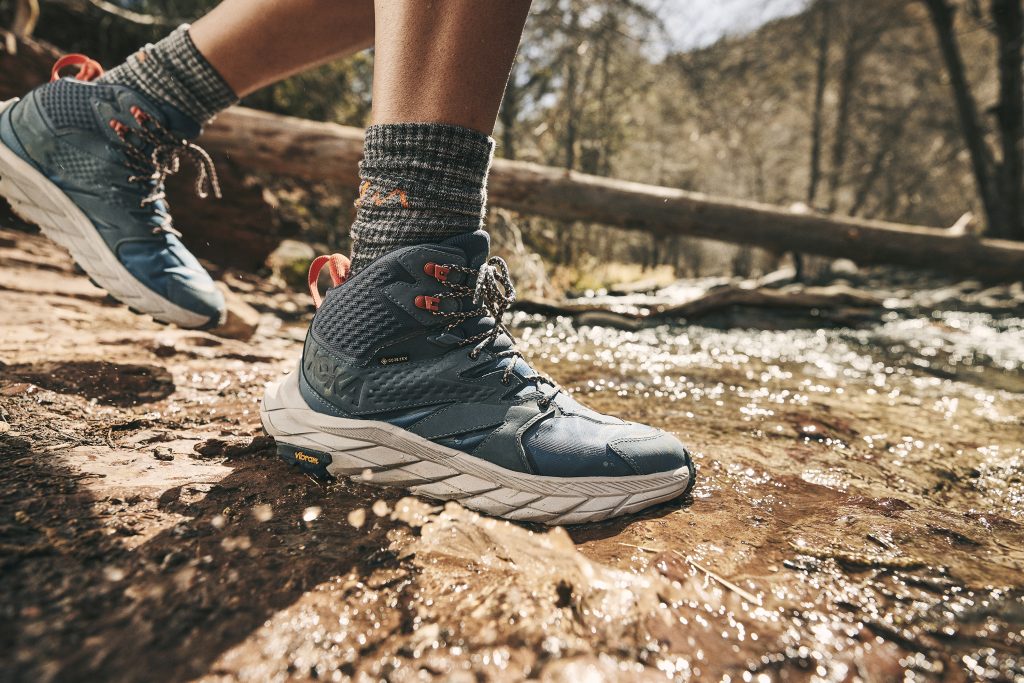
Boot Construction
There are three main boot construction types:
- Board Lasted: They’re the best option if you plan on hiking through wet conditions because they provide excellent waterproofing and insulation. However, they run a little narrow so they’re not ideal for people with wide feet.
- Slip Lasted: They have a mesh lining that allows the foot to breathe, which is great for hiking in hot conditions. However, they’re not waterproof so you’ll need to use them with special socks that wick water away from your feet.
- Direct Attached: They’re the best option for all-around hiking because they have a breathable lining, but you won’t be able to use them with waterproof socks.
- Siped: They provide a good grip on wet rocks and ice, but they’re not recommended for hiking through the snow because they have a shallow tread pattern.
- Dual Compound: They’re perfect for hiking on steep inclines and they also perform well on wet and dry trails, but they’re not as grippy as lugs.
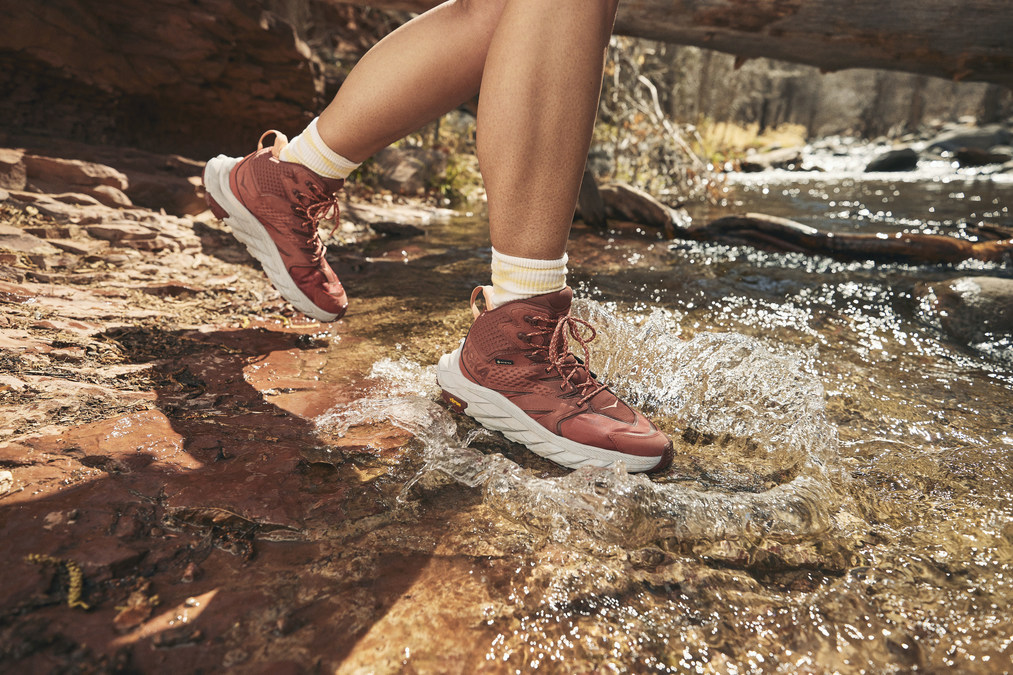
- TPU: They have a smooth tread pattern that’s perfect for hiking on flat trails, but they don’t perform very well in mud or snow.
- Air-Sole: They provide maximum cushioning and they’re great for hiking through mud or snow, but the downside is that they don’t perform very well on steep inclines.
- Cement: They’re the most popular option because they provide great cushioning and comfort, but if you care about ankle support then this isn’t the right type of boot for you.
- Leather: They have a smooth tread pattern that’s perfect for hiking on flat trails, but they don’t perform very well in mud or snow.
- Lug: They have a deep tread pattern that provides excellent grip on wet rocks and ice, but they’re not very comfortable and they wear out quickly.

Choosing the Right Size
It’s important to measure your feet before buying any boots because it will prevent you from having to return them.
When measuring your feet, make sure to leave a little room between the tip of your toes and the end of the boot. If you can’t get your feet comfortably inside the boots, you should try a size up.
It’s also important to make sure that both of your heels are touching the back of the boots when you’re standing up.
If you have wide feet, it’s a good idea to go for a hiking boot that’s a half size bigger than your regular shoe size.
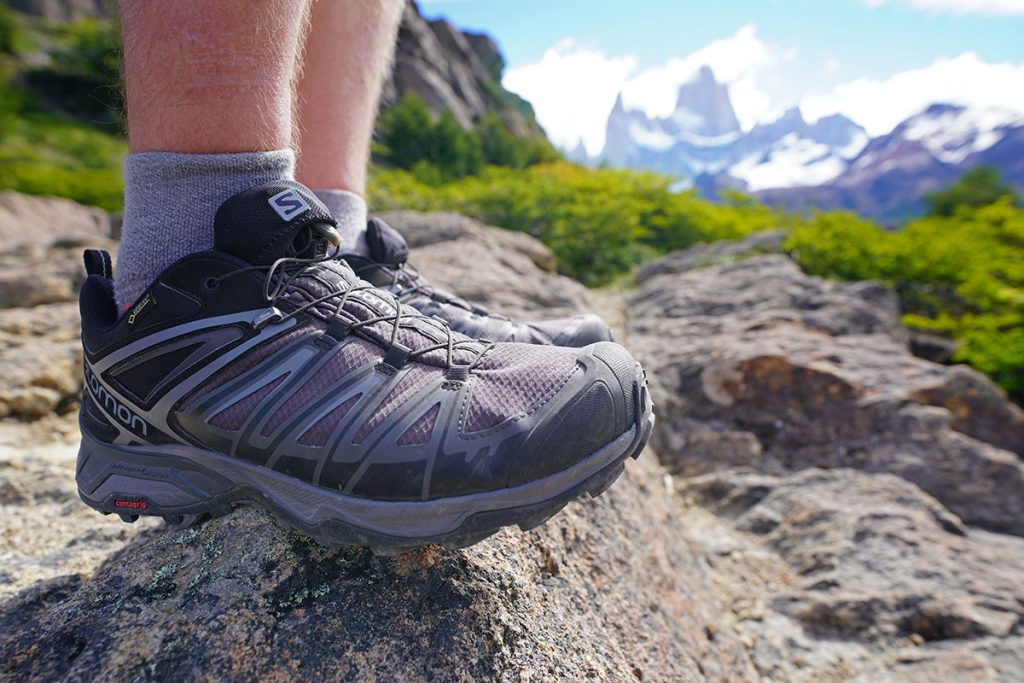
The Anatomy Of a Boot
By understanding different parts of a boot, it’ll be easier to choose one that’s right for you.
- Heel Counter: This is on the backside of the boot and it provides excellent support.
- Shank: It’s in between the arch and outsole of a boot, which is what provides stiffness and protection.
- Outsole: It’s the part of a boot that makes contact with the ground, which provides grip on wet rocks and ice.
- Midsole: The padding between the outsole and insole, which provides cushioning and comfort to your feet.
- Insole: This is the part of a boot that’s in contact with your feet, which provides flexibility and comfort.
- Lacing System: It’s the part of a bolt that tightens it around your foot, which provides better ankle support.
- Lug Depth/Pattern: It’s the part of a boot that provides excellent grip on wet rocks and ice, but it wears out quickly.
- Tongue: It’s the part of a boot that covers your laces, which provides comfort and protection.
- Lace Cover: It’s located on top of a boot and it provides added comfort.
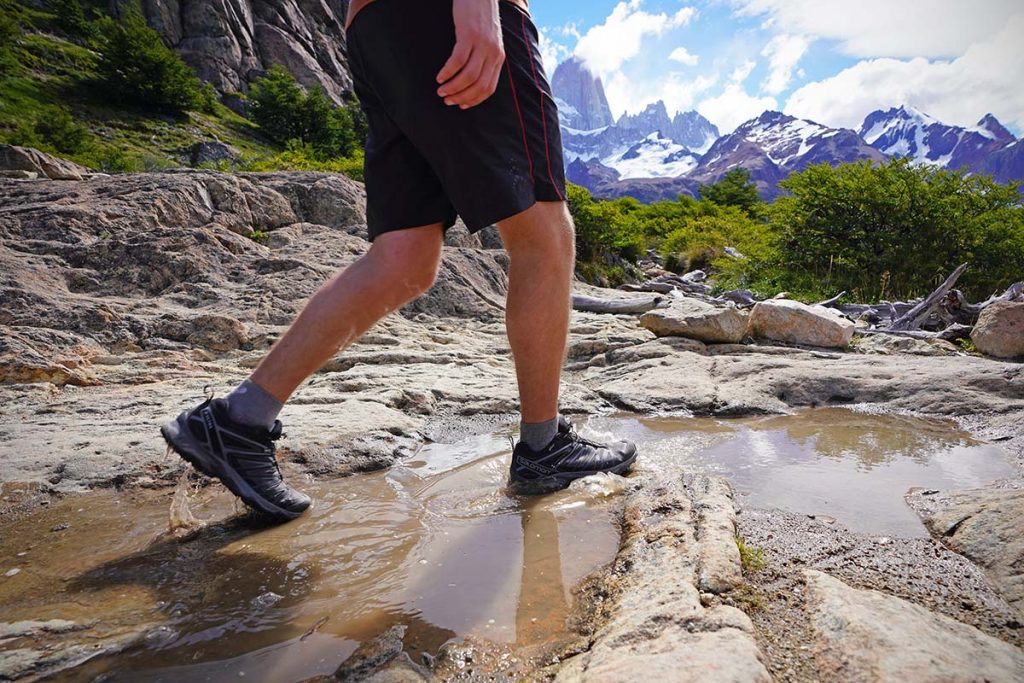
What to Avoid When Choosing Hiking Boots
If you’re just getting started with hiking, there are a few things that should be avoided:
- Avoid Hiking Boots with no Waterproofing: If you plan on hiking through wet conditions, it’s essential to choose boots that’ll keep your feet dry.
- Avoid Hiking Boots with no Cushioning: If your boots don’t have good padding then you’ll end up with sore feet, blisters, and a bad experience.
- Avoid Hiking Boots with no Ankle Support: It’s an excellent option if you plan on hiking through rough terrain, but they come with a cost.
- Avoid Hiking Boots that are too heavy: They’re great if you want to cut down on the weight of your gear, but they don’t provide enough support.
- Avoid Hiking Boots that don’t have a Lacing System: It’s a good idea to choose boots with laces because it provides better ankle support.
- Avoid Hiking Boots with no Tread: It’s a good idea to choose boots with deep tread because it provides excellent grip on wet rocks and ice, but they’re not as comfortable.

FAQ
Q. What are the benefits of having a lacing system?
A. A lacing system provides better ankle support which is essential if you plan on hiking through rough terrain. It also ensures that your boots stay in place while you’re moving around, but they come with a downside because it takes longer to put them on/take them off.
Q. What kind of boots should I wear in winter?
A. If you plan on hiking through wet conditions it’s a good idea to choose boots that’ll keep your feet dry, which is why winter-specific boots are the best option because they’re waterproof and warm. However, if you don’t hike much during the cold months then regular hiking boots will do just fine.
Q: What kind of socks should I wear?
A: If you’re planning on hiking in winter then it’s a good idea to wear thermal socks because they’ll keep your feet warm, but if you don’t hike during the cold months then regular hiking socks will do just fine.
Q: What is the difference between an insole and a sock liner?
A: An insole provides cushioning and comfort to your feet while a sock liner provides additional thin cushioning that you put inside your boots.
Q: How often should I replace my hiking boots?
A: It’s a good idea to check the wear of a boot after every few months because it’ll tell you when is the right time to get rid of them, but you should replace them sooner if they’re starting to fall apart.
Q: What are some common problems with hiking boots?
A: It depends on what kind of boots you have, but some common problems are:
– they’re too heavy for your gear.
– it’s waterproofing is starting to wear off.
– they don’t provide enough support/cushioning.
Q: What are some common problems with hiking socks?
A: Some common problems with hiking boots are that they don’t provide enough support or padding, but you can avoid this by wearing good-quality hiking socks because it’ll ensure that your feet are protected.
Q: How do I know if my hiking boots fit properly?
A: Your heel should fit snugly inside the boot while your toes shouldn’t touch the front of boots, but it’s also important that there isn’t any space between your foot and the sides because this could cause blisters.
Q: What is the best way to put on boots?
A: You should lace them up properly and wear wool socks. It’s important that you don’t wear cotton because it doesn’t wick away moisture which could cause blisters, but make sure your laces aren’t too tight because this could restrict circulation. If
Q: How do I clean my hiking boots?
A: You can use a damp cloth to wipe them down if they’re dirty, but you should only use a leather cleaner for boots made from real or synthetic leather.
Q: What are the benefits of using hiking poles?
A: Hiking poles provide stability and balance which comes in handy if there are loose rocks on the side of the path that could cause you to slip and fall, but it also helps to reduce strain on your legs and knees.
Q: How do I know which hiking poles are right for me?
A: Hiking poles come in different sizes, but it’s a good idea to choose adjustable ones because they’ll fit anyone regardless of their height. It’s also important that you can tighten them properly so they don’t slip out of your hands.
Q. How can I choose boots that fit my foot?
A. There are few things that
A: Hiking Socks are made specifically for hiking and they’re thicker than regular socks, which provide added cushioning and protection. If you plan on completing a longer hike then it’s essential to choose the best sock because it’ll help prevent bl
Q: What is the best hiking boot?
A: It’s a good idea to choose boots with laces because it provides better ankle support.




